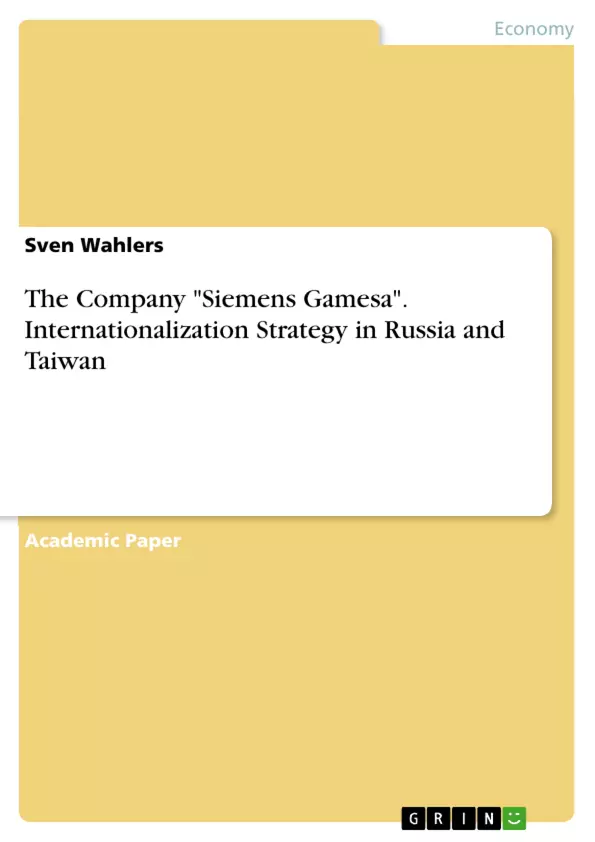Siemens Gamesa, a leading renewable energy company, is the focus of this article, which examines its internationalisation strategy in Russia and Taiwan. First, the need for internationalisation and its complexity is discussed to set the context for Siemens Gamesa's expansion. The OLI paradigm (organisation, localisation, internalisation) is then presented as a framework for the internationalisation strategy. Special attention is given to the PEST (Political, Economic, Social, Technological) analysis for Russia and Taiwan, which provides critical insights into the specific challenges and opportunities in these markets. The article closes with a conclusion that summarises the key findings and discusses implications for the future of Siemens Gamesa in these regions.
Inhaltsverzeichnis (Table of Contents)
- Necessity of Internationalisation and its Complexity
- Siemens Gamesa Reneesble Energy S.A.
- Internationalisation strategy- OLI Paradigm
- Organization
- Location- PEST analysis
- Russia
- Taiwan
- Internalization
- Conclusion
- Bibliography
Zielsetzung und Themenschwerpunkte (Objectives and Key Themes)
This coursework aims to examine the necessity and complexity of internationalisation for businesses, using the example of Siemens Gamesa Renewable Energy S.A. (SG). The focus is on understanding the factors that drive companies to internationalise, as well as the challenges and opportunities associated with expanding into new markets.
- The concept of internationalisation and its relationship to globalisation.
- The importance of understanding external influences, including social and economic conditions, on business activities.
- The role of the OLI paradigm (ownership, location, and internalisation) in guiding internationalisation strategies.
- The assessment of specific markets, such as Russia and Taiwan, using PEST analysis.
- The analysis of SG's competitive advantages and their applicability to international markets.
Zusammenfassung der Kapitel (Chapter Summaries)
The coursework starts by establishing the concept of internationalisation and its significance in the context of globalisation, highlighting the impact of external influences on business activities. It then introduces Siemens Gamesa Renewable Energy S.A. (SG) as a case study, exploring its position as a leader in the wind power industry and its plans for international expansion.
The next chapter delves into the OLI paradigm, a framework for analysing foreign direct investment (FDI). This framework evaluates the factors that contribute to successful internationalisation, including organisational advantages, location advantages, and the potential for internalisation. The analysis is applied to SG, with a focus on its competitive advantages in the wind power sector.
Following this, the coursework examines specific market entry barriers in Russia and Taiwan through PEST analysis. This analysis explores the political, economic, social, and technological factors that may affect SG's business operations in these countries. Finally, the coursework evaluates the feasibility and profitability of SG's internationalisation strategy, drawing conclusions about its potential for success.
Schlüsselwörter (Keywords)
Internationalisation, globalisation, Siemens Gamesa Renewable Energy S.A., OLI paradigm, FDI, PEST analysis, wind power, market entry barriers, Russia, Taiwan, competitive advantages, business strategy, international business.
- Quote paper
- Sven Wahlers (Author), 2020, The Company "Siemens Gamesa". Internationalization Strategy in Russia and Taiwan, Munich, GRIN Verlag, https://www.grin.com/document/915195



